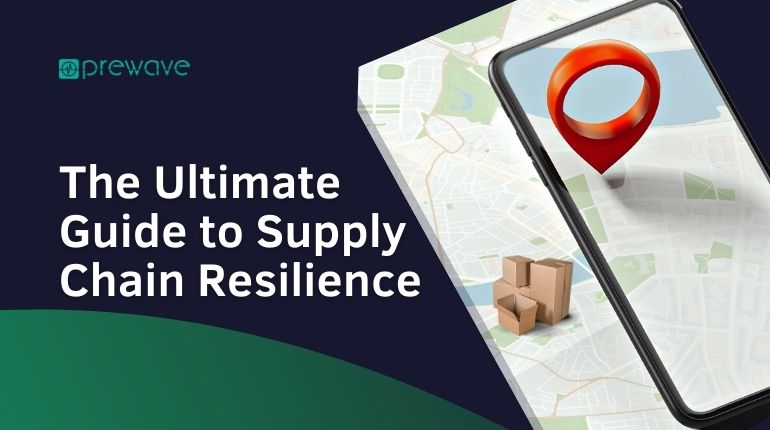The year is 2019. You are a supply chain professional looking to drive down costs and drive up efficiency. If you’re not already implementing the JIT (just-in-time) methodology, you’re probably considering it—mainly because of its many advantages, which include reducing the inventory that’s “sitting” in the supply chain by moving materials only when they’re needed, thus minimising the risk of damages, losses, and additional costs. The goal of JIT is to streamline and optimise the entire supply chain and, if done right, JIT and similar strategies, like “lean” supply chains, are the way forward.
Or so we thought.
The year is 2022, and supply chain resilience is the driving force behind smart supply chain strategies. This is because COVID-19 exposed the vulnerability of supply chains by causing unprecedented disruptions worldwide. As companies continue to deal with the aftereffects, supply chain professionals are planning ahead by putting an even bigger emphasis on risk mitigation and management.
The role of resilience in supply chain management
Traditionally viewed as a cost centre, the supply chain has since become essential to business operations, efficiency, and long-term profitability—which means that anything that might disrupt the supply chain is a direct threat to the business as a whole, making supply chain resilience all the more important.
So, why haven’t more companies adopted supply chain resilience strategies?
We believe that this is due to a number of factors, including:
- The difficulty associated with achieving complete Supply Chain Visibility (SCV)
- The scope and scale of potential risks
- Increased costs
First, let’s tackle costs. It’s true that many prevention measures—such as maintaining safety stock or commodity storage—can be quite expensive. The question is: do the advantages outweigh the costs? The coronavirus pandemic gave us the answer to this question: yes, and in more ways than one.
As supply chain risk can never be fully eliminated, it is safe to conclude that every business has experienced some degree of external risk at one point or another. Risk, however, can also bring about opportunities.
Chances are, if you are impacted by external risk factors, so are your competitors. When this happens, what matters most is how each business reacts—and responds to—the situation. In other words, the companies with the most resilient supply chains are in a position to gain a significant competitive advantage.
The two Rs of supply chain resilience
Resilience is built on two components: resistance and recovery.
Resistance refers to the supply chain’s ability to effectively respond to a disruption by either preventing it entirely or by minimising the effect of the disruption on the supply chain. In other words, resistance is a good indicator of the preparedness of a supply chain in predicting or lessening the impact of a disruption.
Recovery is the supply chain’s ability to recover post-disruption. A stabilisation phase begins, followed by a return to business operations. Once both stages of recovery are complete, organisations review the actions taken to determine whether any changes are required, followed by the continuous development of a supply chain risk management strategy.
Before establishing a strong resistance and recovery plan, however, you need to identify the potential threats to your supply chain, which brings us to our second point: the scope and scale of potential risks.
Supply chain risks: Resilience against what?
Your supply chain is constantly at risk from internal and external factors, the majority of which fall into four broad categories: economic, environmental, ethical, and political. The following video outlines some of the biggest risks that affected global supply chains in 2021:
As the video shows, supply chain disruptions can be caused by a number of factors—many of which might be outside your area of control. Often, it is difficult to ascertain the probability and severity of risks, as well as the impact they might or might not have on your own supply chain. After all, how can you anticipate certain weather phenomena? Or how can you ensure that a supplier has all the necessary safety protocols in place to prevent a cyber attack on their system?
The answer is simple: by having the right Supply Chain Risk Management (SCRM) technology in place, you can immediately categorise and significantly reduce—or prevent—the impact of a potential disruption on your business.
Prewave, a leading supply chain risk management platform used by manufacturing companies worldwide, can help you on the path to supply chain resilience. We use our AI technology to scour all publicly available information—such as social media data, databases, and more—to find any and all risks affecting your suppliers, and your suppliers’ suppliers. In short, if something is going on, we’ll know.
With Supplier Monitoring, you can answer a number of critical questions pertaining to your supply chain, including:
Next stop: Tier-N transparency
All roads lead to Supply Chain Visibility (SCV).
For many companies, however, SVC does not extend beyond their Tier 1 suppliers. This is because SCM departments are mostly focused on forming and maintaining strong relationships with their top-level suppliers, which ensures a certain amount of transparency. In other words, you are usually informed of any risks your Tier 1 suppliers might be exposing you to.

External risks, on the other hand, are typically unknown and can take any business by surprise. This is true for any supplier category—but more so for Tier-N.
These third-party suppliers branch out across multiple lower levels in the supply chain, which is a problem, considering how little is known about their risk exposures—especially when compared to the transparency of Tier 1 suppliers.
The solution?
Prewave’s Tier-N Monitoring, which is centred around complete supply chain visibility. The following graphic shows you how the solution works:

To recap:
- This comes at no extra cost to your suppliers
- Supply chain mapping will extend beyond your immediate suppliers
- You will receive alerts about events affecting the lower levels of your supply chain (Tier-N)
- You will be able to plan for and respond to any disruptions




